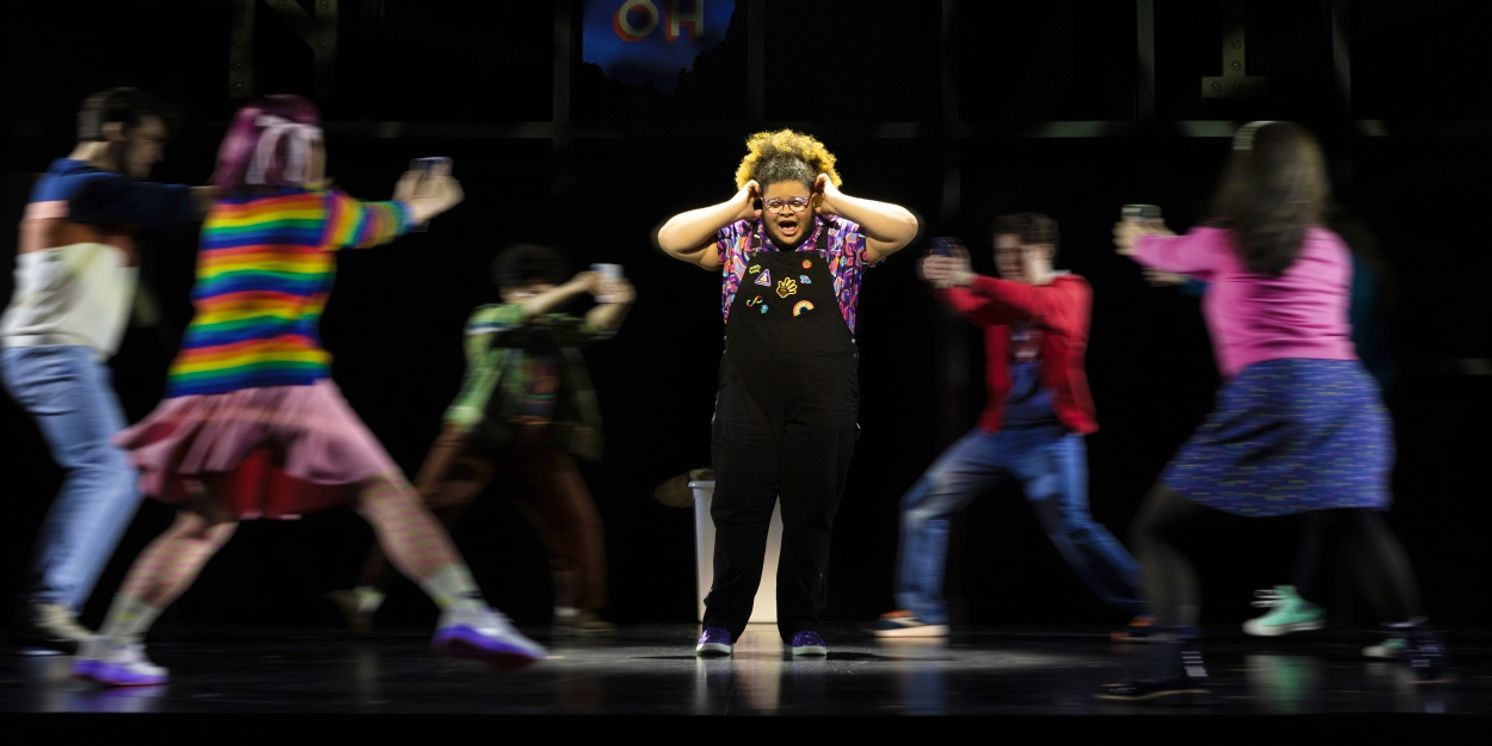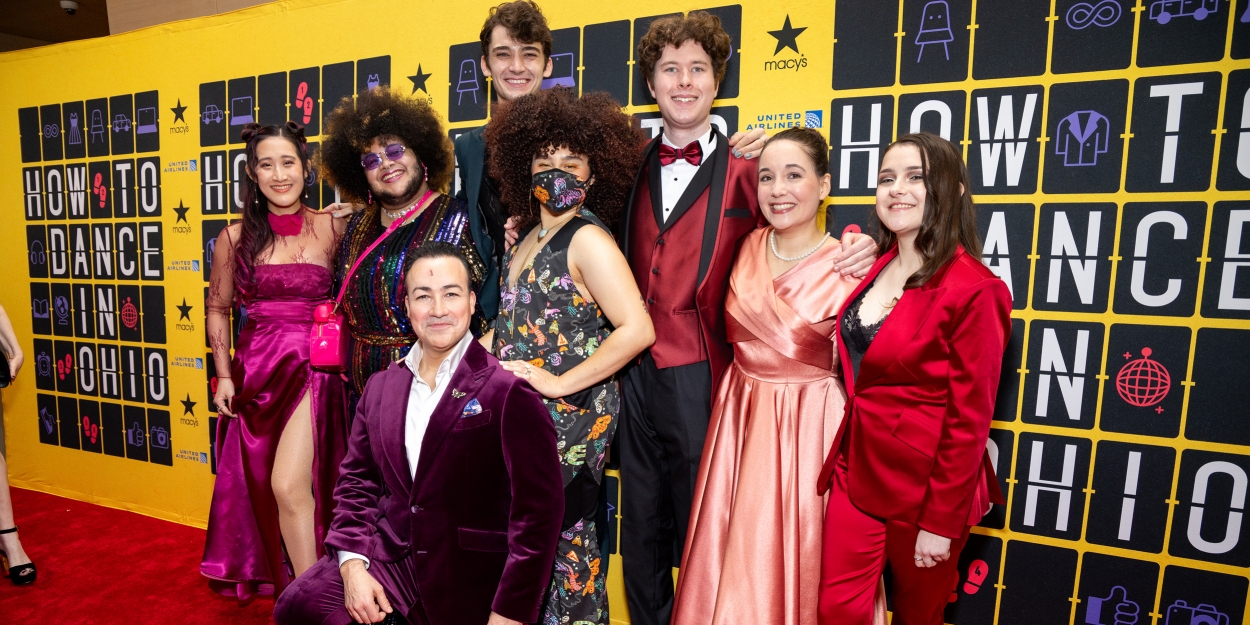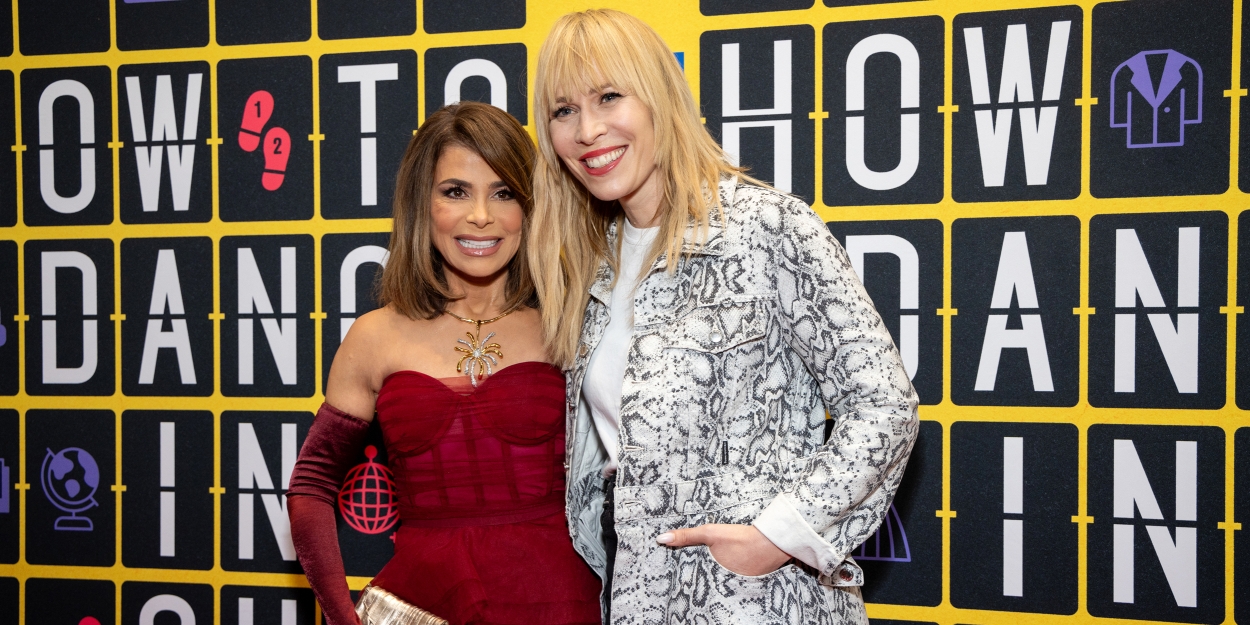Review Roundup: HOW TO DANCE IN OHIO Opens on Broadway
How to Dance in Ohio is currently running at the Belasco Theater.

Alexandra Shiva’s Peabody Award-winning documentary comes to life as a musical this Broadway season. How to Dance in Ohio, with book and lyrics by Rebekah Greer Melocik, music by Jacob Yandura, choreography by Mayte Natalio, and direction by Sammi Cannold, has arrived on Broadway, where it just opened at the Belasco Theatre.
How to Dance in Ohio is a heartfelt and poignant new musical about the desire to connect and the courage it takes to put yourself out into the world. As a group of seven autistic young adults prepare for their first ever formal dance—they face a challenge that breaks open their routines as they experience love, stress, excitement, and independence. How to Dance in Ohio is a story about people on the cusp of the next phase of their lives, facing down hopes and fears, ready to take a momentous first step…and dance.
Let's see what the critics had to say!
![]() Jesse Green, New York Times: Perhaps it’s enough that “How to Dance in Ohio” offers solace and encouragement in a mild, conventional package. (There are cool-down spaces for those who need them, as one of the actors explains in welcoming the audience.) Doing sweet, reparative work for any part of humanity means doing sweet, reparative work for it all.
Jesse Green, New York Times: Perhaps it’s enough that “How to Dance in Ohio” offers solace and encouragement in a mild, conventional package. (There are cool-down spaces for those who need them, as one of the actors explains in welcoming the audience.) Doing sweet, reparative work for any part of humanity means doing sweet, reparative work for it all.
![]() Adam Feldman, Time Out: Directed with sensitivity by Sammi Cannold, How to Dance in Ohio is an underdog itself: a modest production of an original musical that originated in Syracuse, New York, and—like another sincerely inspirational audience-pleaser, Come From Away—rose on its own merits, without big stars, hit songs or well-known pop-culture IP. “Going places / I am going places / There are places I need to be,” sing the actors in the opening number. “But most of the spaces / That I want to get to / Were not designed for me.” Whether it was designed for them or not, they’ve made their own space on Broadway now, and proved that they belong.
Adam Feldman, Time Out: Directed with sensitivity by Sammi Cannold, How to Dance in Ohio is an underdog itself: a modest production of an original musical that originated in Syracuse, New York, and—like another sincerely inspirational audience-pleaser, Come From Away—rose on its own merits, without big stars, hit songs or well-known pop-culture IP. “Going places / I am going places / There are places I need to be,” sing the actors in the opening number. “But most of the spaces / That I want to get to / Were not designed for me.” Whether it was designed for them or not, they’ve made their own space on Broadway now, and proved that they belong.
![]() Dalton Ross, Entertainment Weekly: How to Dance in Ohio — which features sparse staging and hardly any costume changes until the big dance itself — often misses by trying to cover too much ground from too many different angles and perspectives. And the music as a whole is only okay. But the moments that do hit — when we see these young adults confronting trepidation and unfamiliarity, and just generally celebrating life — hit hard, and will resonate with both the neurotypical and neurodivergent alike. Just ask all the folks in my row reaching for tissues.
Dalton Ross, Entertainment Weekly: How to Dance in Ohio — which features sparse staging and hardly any costume changes until the big dance itself — often misses by trying to cover too much ground from too many different angles and perspectives. And the music as a whole is only okay. But the moments that do hit — when we see these young adults confronting trepidation and unfamiliarity, and just generally celebrating life — hit hard, and will resonate with both the neurotypical and neurodivergent alike. Just ask all the folks in my row reaching for tissues.
![]() Greg Evans, Deadline: No, the let down is really the fault of a book that relies on easily predictable personal triumphs – shells will be broken, invitations extended, bad boyfriends dumped, all not a moment before or after you’d expect. And as loving and sweet-natured as Cannold’s direction is, it, and the show, is destined to live in the inescapable shadow of that Tony-winning musical populated with othered teens also demanding independence and dignity in a world not of their making. Kimberly Akimbo, that perfect show just a block away, raised a bar that How To Dance In Ohio just can’t limbo past. It’s not fair, but its the type of challenge Dr. Amigo’s clients would accept.
Greg Evans, Deadline: No, the let down is really the fault of a book that relies on easily predictable personal triumphs – shells will be broken, invitations extended, bad boyfriends dumped, all not a moment before or after you’d expect. And as loving and sweet-natured as Cannold’s direction is, it, and the show, is destined to live in the inescapable shadow of that Tony-winning musical populated with othered teens also demanding independence and dignity in a world not of their making. Kimberly Akimbo, that perfect show just a block away, raised a bar that How To Dance In Ohio just can’t limbo past. It’s not fair, but its the type of challenge Dr. Amigo’s clients would accept.
![]() David Cote, Observer: Generically staged by Sammi Cannold, How to Dance in Ohio was clearly made with love and will touch some hearts—on the spectrum or not—but feels synthetic and patchy when not outright tacky. Even the triumphant final fête, in which our heroes get to strut their stuff, is overshadowed by a head-scratching design choice (sets by Robert Brill). Drew, tasked with organizing the “Second Chance Dance” in a day (!) unveils and hangs a jumbo disco ball which he somehow had time to decorate. The giant orb is festooned with mauve flowers and shiny heart-shaped balloons—and it bears an unfortunate resemblance to the CDC illustration of the novel coronavirus. I cringed, but maybe I’m looking at it all wrong. One person’s deadly pathogen is another’s fascinating pattern.
David Cote, Observer: Generically staged by Sammi Cannold, How to Dance in Ohio was clearly made with love and will touch some hearts—on the spectrum or not—but feels synthetic and patchy when not outright tacky. Even the triumphant final fête, in which our heroes get to strut their stuff, is overshadowed by a head-scratching design choice (sets by Robert Brill). Drew, tasked with organizing the “Second Chance Dance” in a day (!) unveils and hangs a jumbo disco ball which he somehow had time to decorate. The giant orb is festooned with mauve flowers and shiny heart-shaped balloons—and it bears an unfortunate resemblance to the CDC illustration of the novel coronavirus. I cringed, but maybe I’m looking at it all wrong. One person’s deadly pathogen is another’s fascinating pattern.
![]() Tim Teeman, The Daily Beast: “An object at rest stays at rest,” Liam sings in his final song, “Building Momentum,” which is a song about crafting one’s own destiny, the future that makes sense to you. And in the decisions and end-points of the characters on stage—and in their final rock-out dance and singing—that is the emphatic common theme. The song is not a plea for understanding and acceptance of any kind. It is, like the rest of How to Dance in Ohio, a funny, joyful, and cheering assertion of both diversity and self-determination.
Tim Teeman, The Daily Beast: “An object at rest stays at rest,” Liam sings in his final song, “Building Momentum,” which is a song about crafting one’s own destiny, the future that makes sense to you. And in the decisions and end-points of the characters on stage—and in their final rock-out dance and singing—that is the emphatic common theme. The song is not a plea for understanding and acceptance of any kind. It is, like the rest of How to Dance in Ohio, a funny, joyful, and cheering assertion of both diversity and self-determination.
![]() Johnny Oleksinski, New York Post: Also off-putting is that the musical’s rightly expressed message — that people with autism should not be objects of pity or a means to someone else’s inspiration — is undone by a book (Rebekah Greer Melocik) and score (Melocik and Jacob Yandura) that can only manage two things with the subtlety of semi-truck: tears and uplift. Complexity, take a hike.
Johnny Oleksinski, New York Post: Also off-putting is that the musical’s rightly expressed message — that people with autism should not be objects of pity or a means to someone else’s inspiration — is undone by a book (Rebekah Greer Melocik) and score (Melocik and Jacob Yandura) that can only manage two things with the subtlety of semi-truck: tears and uplift. Complexity, take a hike.
![]() Sandy MacDonald, New York Stage Review: Meanwhile, the young performers who make up the seven-member core – all of whom self-identify as autistic – do their best to make us, the audience, comfortable. In a prefatory group speech, one performer notes the availability of “cool-down spaces.” All but the most easily triggered playgoer will want to hang in, though, to hear the melodies – buoyant to poignant – that composer Jacob Yandura has set to the text, portions of which have been lifted verbatim from the film.
Sandy MacDonald, New York Stage Review: Meanwhile, the young performers who make up the seven-member core – all of whom self-identify as autistic – do their best to make us, the audience, comfortable. In a prefatory group speech, one performer notes the availability of “cool-down spaces.” All but the most easily triggered playgoer will want to hang in, though, to hear the melodies – buoyant to poignant – that composer Jacob Yandura has set to the text, portions of which have been lifted verbatim from the film.
![]() Steven Suskin, New York Stage Review: But good intentions alone, alas, do not a compelling musical make. The intentions are good, the core performances are good (and in some cases better than that), and the audience is likely to sit there rooting for the success of the characters in their quest to attend a prom-like dance in Ohio. On the other side of the ledger, though, is a score that is little more than functional (with exceptions as hereinafter noted), and a book that devolves into flimsy musical comedy style. The central performers earn our admiration, and the benefit of any doubts we might have; but How to Dance in Ohio offers only moderate entertainment, and moderate entertainment is unlikely to prove strong enough to attract sufficient audiences to get through the long cold winter.
Steven Suskin, New York Stage Review: But good intentions alone, alas, do not a compelling musical make. The intentions are good, the core performances are good (and in some cases better than that), and the audience is likely to sit there rooting for the success of the characters in their quest to attend a prom-like dance in Ohio. On the other side of the ledger, though, is a score that is little more than functional (with exceptions as hereinafter noted), and a book that devolves into flimsy musical comedy style. The central performers earn our admiration, and the benefit of any doubts we might have; but How to Dance in Ohio offers only moderate entertainment, and moderate entertainment is unlikely to prove strong enough to attract sufficient audiences to get through the long cold winter.
![]() Jonathan Mandell, New York Theater: “How To Dance in Ohio” is a musical adaptation of a 2015 documentary film of the same name about a group of autistic young adults at a counseling center in Columbus, Ohio, who, as part of their social skills therapy group, spend months preparing for a formal prom-like dance. The production, which opens tonight at Broadway’s Belasco Theater, has some tuneful melodies, some touching moments and, above all, an exhilarated and exhilarating cast, featuring seven performers who are themselves autistic young adults making their Broadway debuts portraying the autistic characters. But the musical falls short of the documentary it has adapted in ways that make the translation to the stage feel like less than an ideal fit for Broadway.
Jonathan Mandell, New York Theater: “How To Dance in Ohio” is a musical adaptation of a 2015 documentary film of the same name about a group of autistic young adults at a counseling center in Columbus, Ohio, who, as part of their social skills therapy group, spend months preparing for a formal prom-like dance. The production, which opens tonight at Broadway’s Belasco Theater, has some tuneful melodies, some touching moments and, above all, an exhilarated and exhilarating cast, featuring seven performers who are themselves autistic young adults making their Broadway debuts portraying the autistic characters. But the musical falls short of the documentary it has adapted in ways that make the translation to the stage feel like less than an ideal fit for Broadway.
![]() Joe Dziemianowicz, New York Theatre Guide: Characters have been invented, as have subplots about divorce, deaths, career dilemmas, and college acceptances. Anxiety is in the air as the group prepares for the prom and deals with daily life — from hygiene to personal safety to decisions about college. A countdown clock ticks down days on the set, where letters are scattered, alphabet soup-style. Presumably, it’s a peek at neurodiverse brains. Some of the narrative embroidery works, and some gets knotted.
Joe Dziemianowicz, New York Theatre Guide: Characters have been invented, as have subplots about divorce, deaths, career dilemmas, and college acceptances. Anxiety is in the air as the group prepares for the prom and deals with daily life — from hygiene to personal safety to decisions about college. A countdown clock ticks down days on the set, where letters are scattered, alphabet soup-style. Presumably, it’s a peek at neurodiverse brains. Some of the narrative embroidery works, and some gets knotted.
Average Rating: 68.2%
- To read more reviews, click here!
- Discuss the show on the BroadwayWorld Forum
Reader Reviews
Powered by
|
Videos




